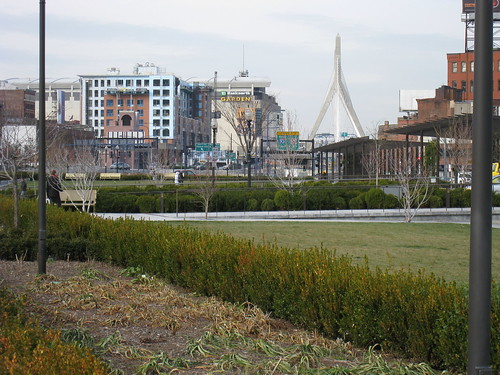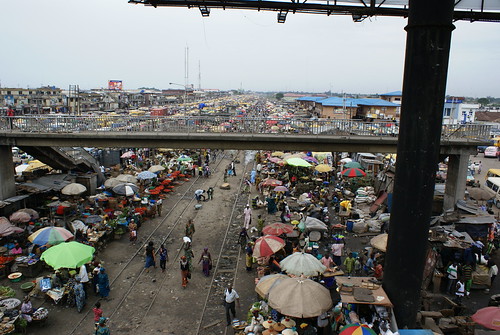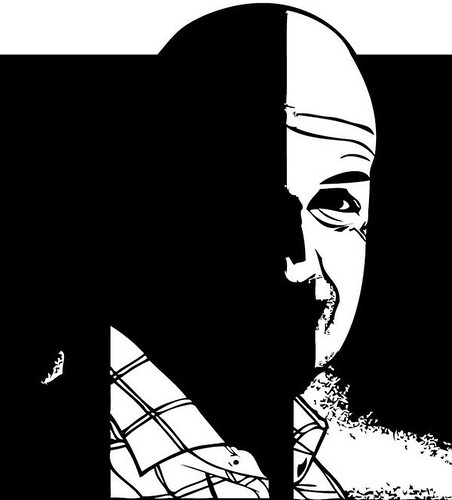The story of America has always been a story of large personalities. As 21st Century urbanists, we look at the transformation of late 20th Century urban America and can’t help noticing how large personalities like Frank Lloyd Wright, Le Corbusier and Robert Moses played a role seemingly promoting the postwar demise of America’s cities, a reading partly propped by Jane Jacobs’s Death and Life of Great American Cities. Interestingly, this reading may be one of the ways that we continue to flatter ourselves as urban designers. As products of planning and design school, we like to believe the enterprise of urban design matters greatly to the illth and health for America’s cities. Now that we got our utopias in line or much sobered up and humanized, why, let’s clean up the splatter left by the reign of modernists.
Uhm… Was it really Wright and Corbu that did us in in the first place? Was it the boing-o headed utopias of these bad boys of architecture that gave us separated land uses, dehumanized cores and sprawl-burbs? What actually did contribute to the postwar demise of America’s cities?
Frank Gruber has been doing a lot of careful thinking on his Huffington Post blog on this topic. As an entertainment lawyer and Santa Monica Lookout News columnist, Gruber sure does an exorbitant amount of reading and thinking on the topic of urbanism. But (maybe because he is not an architect?) Gruber does not spend much time on contemporary urbanism’s favorite whipping boys and, in fact, thinks little of them in his attempt to figure out why America destroyed its great cities. In a provocative arc that has been unfolding over the past year on his blog, Gruber’s attention has turned to his current working lineup of “suspects” behind city-murder. Interestingly, his latest post is a review of Earl Swift’s The Big Roads: The Untold Story of the Engineers, Visionaries, and Trailblazers Who Created the American Superhighways, in which Gruber has come across some really big bosses who may have actually played a leading role in the demise of urban conditions in America, and they are not the persons most urbanists have probably even heard of. The biggest one of these was the technocrat Thomas MacDonald, who spent a whopping three plus decades (from 1919 to 1953) as head of the Federal Bureau of Public Roads (the predecessor to the Federal Highway Administration). It was MacDonald who crafted the flesh and bones of the 1944 highway bill that created the downtown slicing interstate system of highways, which the 1956 appropriations bill implemented wholesale without anyone really inspecting the particulars, much less the implications, of the national plan.
While superhighway construction helped disperse industrial activity and middle class habitation to the periphery, a real devastating effect was taking the freeways into the center cities themselves. Gruber summarizes why this was important to our postwar cities since, unlike Europe, where cities preserved the traditional fabrics of their transit-served cores by stopping suburban limited access highways at a ring road around the core, Americans wanted freeways to connect to the center “under the profoundly mistaken view that their cities would revive if they were connected to the suburbs by high-speed roads.” Gruber notes that the key decision to bring freeways into cities, “was never debated in a meaningful way”.
I would add to this: we still have not had this debate! Gruber lists the epic Big Dig among the efforts to repair the freeway incisions, which is a seriously wasteful example to contemplate in repairing freeway incisions to the core. In fact, it demonstrates the opposite. We should not have had a Big Dig, except maybe to park the cars right there. (Louis Kahn’s plan for terminal parking in Philadelphia at immense parking-deck “harbors” serving the downtown thresholds was a pretty darn good solution for a modernist, I must say.) The right to go right in to (and in fact, more accurately, through) downtown via freeway is so tied up to our unconscious conceptions of how the city should function, that we don’t even bother to question it. Not long ago, Jarrett Walker’s fictional city for a transit network planning game he devised was roundly critiqued for its seeming lack of freeway "completion" on his blog Human Transit. Jarrett was surprised that he had to defend his decision to stop the freeway before the core, pointing out some obvious North American examples that spared the core.
That we have not yet had a holistic debate about this even among urbanist circles is telling enough. Still the urbanist solution appears to come down to "capping" downtown freeways. An image of the wind-howling linear park over the Big Dig was used to tout it as a good precedent recently by the consultants presenting the Charlotte Center City Partners’ 2020 Vision Plan (a similar park is being proposed to cap a portion of our downtown loop). Tellingly, (unlike the photo above) not a single person appeared in the photo. A transit engineer I know and I looked at each other, each of us thinking the same thing. Immediately, he started sketching on his napkin. He sketched a map of the downtown freeway loop and started “X”-ing out the lower southern section (the part we call the John Belk Freeway), implying to take out the redundant lower section of our very small and tight-curved inner freeway loop. Easily, I grasped the immense power of his solution (yes, engineers can think brilliantly about urbanist solutions too!). Immediately, visions of a wide boulevard with a welcoming median replacing the loop came to us, with multiple rows of trees and maybe with active and passive uses in it, as in median promenades in Paris. Such a boulevard – by also separating faster through traffic from slower local traffic – could easily improve the traffic needs of the city by granting drivers immediate access to the grid, instead of bringing them to limited interchange chokepoints that actually slow everyone down. This very act of healing the sutures, by removing all the ramps and network barriers to funnel off traffic to them, would also open up the highly fragmented conditions of the adjacent grid two blocks deep in either direction, greatly connecting the city vastly more than imagined by the said meager capping, which just covers over the traffic backing chokepoints (a proposal for the capping can be found here; in fact, this particular proposal would even worsen traffic since it would demand additional rerouting in the fabric).
By offering a grand boulevard to front to instead, suddenly you are not only augmenting, but creating more value to all parcels adjacent to John Belk Freeway. Instead of looking at an immense freeway chasm, buildings will be facing a green boulevard supporting urbanism! All of a sudden you’ve created an amazing asset for the city around the entire southern periphery of our downtown, a far greater impact than the three-block long capping park proposed.
There is plenty of room here...
 |
| Click on image to view in Google Maps |
...To do this in Charlotte:
 |
| Click on image to view in Google Maps |
Part of the reason why we haven’t had this debate meaningfully in our country about the actual need for freeways to go through our downtowns, I think, is because of that form-obsessed, architecture-based mythology of urbanists that blames modernism for everything. This myth constantly sidelines urbanists from talking cogently about freeways (we prefer to talk about the problems with buildings). For someone who talked so much about the street and who was a key activist fighting Robert Moses’s plans to cut a freeway through Manhattan, Jane Jacobs notably does not mention Thomas MacDonald even once among her historic cast of evil-doers in Death and Life, all of whom have by now become the “usual suspects” of separated use, road-based, sprawl promoting planning. (I find this dearth of freeway talk in Death and Life very strange. Jacobs, notably, left Frank Lloyd Wright’s name off the list but disparaged Lewis Mumford amongst the gang of the usual suspects—who, ironically enough, actually led the late counter-charge against MacDonald and his downtown-slicing plans.)
Perhaps in obsessing on the forms, the hubris of the profession has detracted us a bit from the energy transferring mechanics that would most effectively “retrofit” America’s cities back to their greatness.







